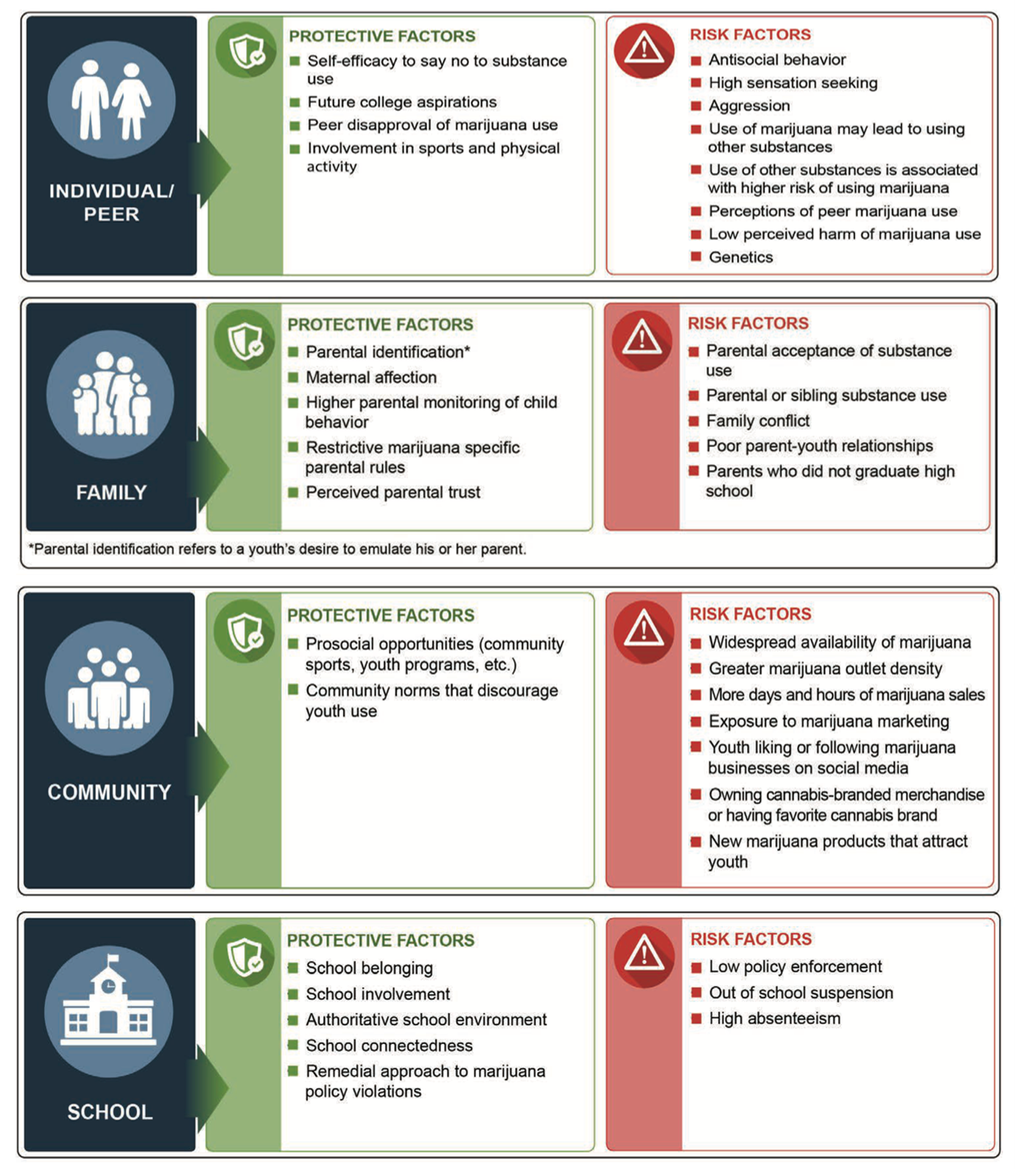Fitness
Risk factors for cannabis use in young people

With cannabis use among young people on the rise, Ronan Fleury, Prof Bobby Smyth and Prof Mary Cannon. discuss the mental and physical impacts and the importance of understanding the risk factors
Cannabis remains the most widely used illegal drug among teenagers. Research indicates that usage typically begins between ages 12 and 17, with this age group making up about two-thirds of new users. (14) According to the European Monitoring Centre for Drugs and Drug Addiction, approximately 23 million people in Europe (8% of those aged 15-64 years) had used cannabis in 2022. (8) Among European 16-year-olds, daily cannabis use has slightly increased from about 0.5% in 1995 to 0.8% in 2019. (9) In the United States, the increase is more striking, with daily use among 16-year-olds rising from 0.8% in 1991 to 4.8% in 2019. (11)
This growing trend is concerning, as adolescence is a period of biopsychosocial development, lending itself to risk-taking maladaptive behaviours and actions. (14) Worryingly, many young people do not perceive cannabis use as risky and believe they can obtain it with ease. (9)
Are there potential harmful effects on physical and mental health?
Cannabis use can have significant impacts on both physical and mental health. Regular use can lead to addiction, with about one in three adolescent regular users becoming addicted. (13) A study from the 2019-2020 National Drug and Alcohol Survey (NDAS) found that nearly 20% of cannabis-using youth met the criteria for Cannabis Use Disorder (CUD). (7), (16) This disorder can severely impact education attainment, job performance, social interactions, and emotional wellbeing. (3), (19)
Cannabis use is also linked to worsening mental health issues, including anxiety, depression, and psychosis. Users are three to four times more likely to develop acute psychosis, with early use of high-potency cannabis increasing this risk to five to six times. (6), (14) Physically, smoking cannabis exposes young people to many of the same harmful toxins and carcinogens found in tobacco smoke, which can lead to chronic bronchitis. (1) Furthermore, cannabis use has been associated with cardiovascular events such as atrial fibrillation. (18) Regular cannabis use can also precipitate cannabinoid hyperemesis syndrome. (4) Cannabis is one of the drugs which features most frequently in drug-related attendances at emergency departments across Europe, with palpitations and panic attacks featuring prominently in such presentations. (21)
Risk factors for youth cannabis use
Several factors contribute to cannabis use among young people. Some young individuals may use it to alleviate or decrease boredom, improve sleep quality, or enhance social interactions. (12)
Additionally, media coverage on cannabis decriminalization and its medical applications has contributed to a growing societal acceptance and the mistaken belief that its use is risk-free. (5), (10), (23)
Risk factors for cannabis use are often categorized into various domains, such as individual traits (e.g., impulsivity, poor self-regulation), family dynamics (e.g., low parental education, lack of supervision), and social influences (e.g., peer use and screen time). (2), (16), (24)
Is there a consensus among researchers/clinicians on which risk factors are critical?
Researchers generally agree on the broad categories of risk factors for cannabis use. A comprehensive review of 81 studies through the lens of the socioecological model, each with an average sample size of 10,191 students, highlighted that most school-based research focuses on individual and societal factors influencing cannabis use in youth. (2), (22) However, more complex, multilevel influences often go unexamined, indicating a need for future research to explore these areas. This review also pointed out the importance of gender-specific analysis, as existing studies showed mixed results regarding gender differences in cannabis use.
To bridge these research gaps, our team investigated the risk and protective factors for cannabis use among adolescents using cross-sectional secondary data from the Planet Youth survey conducted in 2021. (20) Our sample included over 4,000 adolescents aged between 15-16 years, recruited from both urban and rural areas in Ireland. We defined our outcome of interest as current cannabis use in the past month. By using mixed-effects logistic regressions, we explored associations between cannabis use and various risk and protective factors, which were selected after a robust literature review.
Our findings revealed a current use prevalence of just over 7%, which did not differ between males and females. However, key risk factors included having friends who used cannabis (a ten-fold increased odds of cannabis use), parental ambivalence towards cannabis use (an almost four-fold increased odds), perceiving cannabis as non-harmful (a two-and-a-half-fold increased odds), using other substances (ranging from a two-and-a-half to a three-and-a-half-fold odds) peer pressure (an almost two-fold increased odds), and low parental supervision (11% increased odds). (17)
Therefore, this study identified critical and modifiable factors for youth cannabis use, which are particularly useful for those in health policy development and drug prevention programs. Furthermore, to optimise and operationalise these results and those of previous researchers, a bespoke public health messaging program should be designed to address these known risk factors.
What does all this mean?
Cannabis use among young people is on the rise, with serious implications for their physical and mental health. Understanding the risk factors, ranging from individual circumstances to social and familial environments, can help shape effective prevention strategies informed by robust evidence-based policy. These insights highlighted above by previous and our own recent work underscore the importance of comprehensive, evidence-based approaches to mitigate the growing trend of adolescent cannabis use. Some of the specific risk factors noted above may be subject to influence. For example, accurate information could be provided to adolescents and parents on the real risks of cannabis use, which may, in turn, increase the perception of risk and counter parental ambivalence about use. Similarly, strategies could be developed to improve parental monitoring of teenagers. By addressing these risk factors through targeted interventions and policies, we can better support the wellbeing of young people and reduce the prevalence of cannabis use in this vulnerable demographic.
Please Note: This is a Commercial Profile


)






